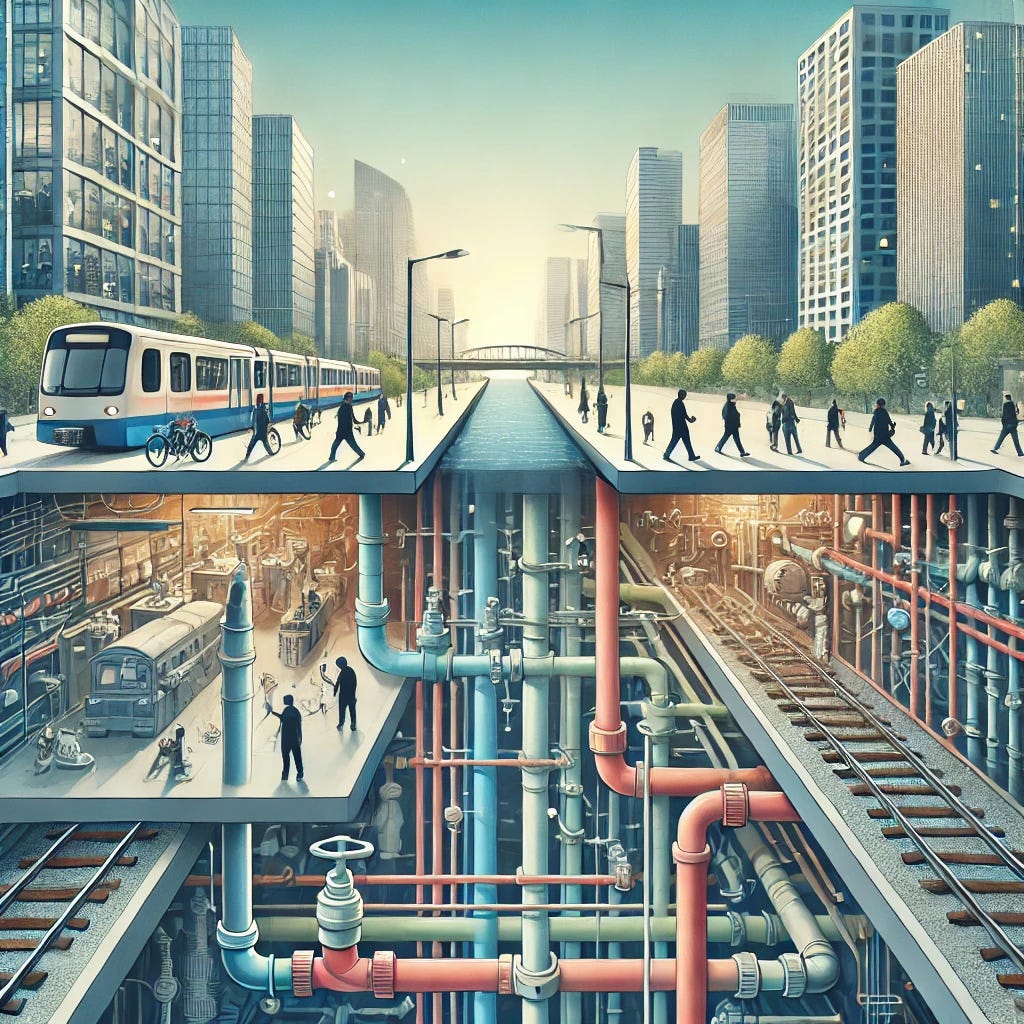Liberating structures
How many people were needed to produce this post?
(image by ChatGPT)
I made a comment to https://harishsnotebook.wordpress.com/2025/02/23/the-invisibility-of-infrastructures/
Sharp
This reminds me of the question: "how many people does it take to produce this pencil?". If you trace back everything - carbon, wood, machinery, labour, money, transport, .. ... ... and who to produce these?, ... and who to produce these? ... - you have to conclude it takes all of us on this world to produce a pencil.
I'm also reminding you of Korzibsky, who noticed we tend to confuse conceptual models (maps, and words) with reality (and the thing we're speaking about) AND that the structure of the model accounts for its usefulness. Infrastructure is a used and therefore useful "model" of reality and her structure accounts for the usefulness.
That's how we're using the word "infra-structure". With infra we're referring to the "underlying" structure, a meta-level. A structure to support reality-in-use.
Not only does a (infra-)structure accounts for the usefulness, using accounts for the meta- or over-structure: using and maintaining an infrastructure. An infrastructure both conditions working (using) and working relationships and has to be conditioned - reworked.
Using structuring
Structuring follows use and using follows structures. That explains how (cost-)accounting cannot account for infrastructure. We'll always "run out of" time and budget not only with infrastructural projects, but also with using and maintaining the structure.
Thanks for using '' around 'systems' and " " around "thing" and "infrastructure". I tend to limit the use of the word system to human made systems, like networks.
-----------
There are some other concepts related to (infra) structure: explicit vs implicit and tacit vs manifest. More later.
Implications for facilitating groups of people
Tend to the “infra-structure”, make use of the structure of the setting. If you want stagnation, make people sit behind a desk. If you want action, get rid of the desks.
Always go step by step, don’t skip (organisational) levels.
Use time to construct a meeting, follow a natural “path” from beginning to the middle and the end. And then stop. But only fixate the beinning, the breaks and the end.
Let participants investigate the present (infra)structure and a required structure for results. More often than not, what is blockading us is in the mind.
Act first, think later. Thinking usually leads to inaction, as most people seem to think thinking is also an action. use it as a reflection on the the action. See: “action learning”.



If we tend to confuse conceptual models with reality this post is very confusing.